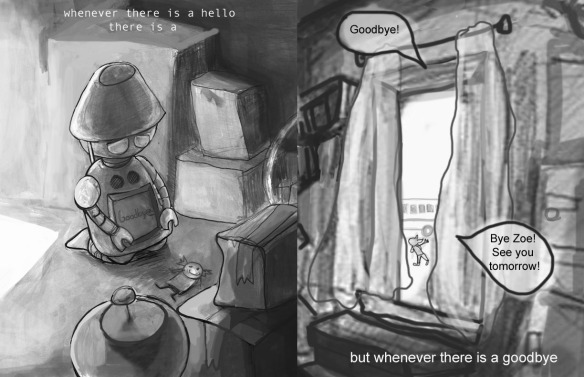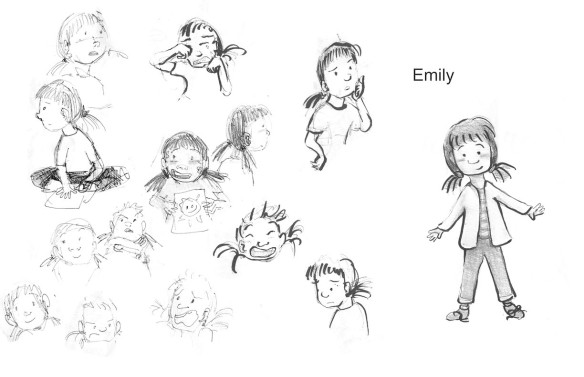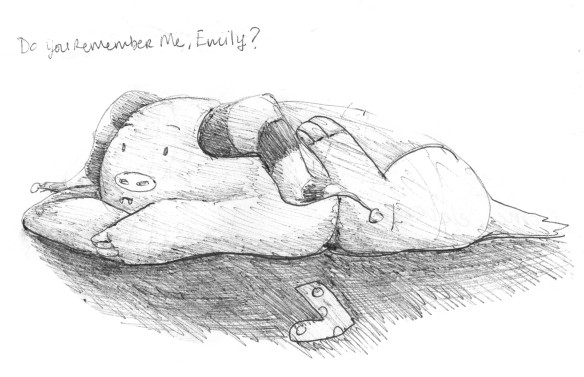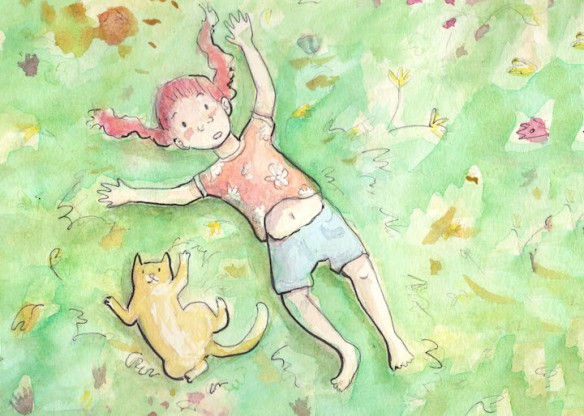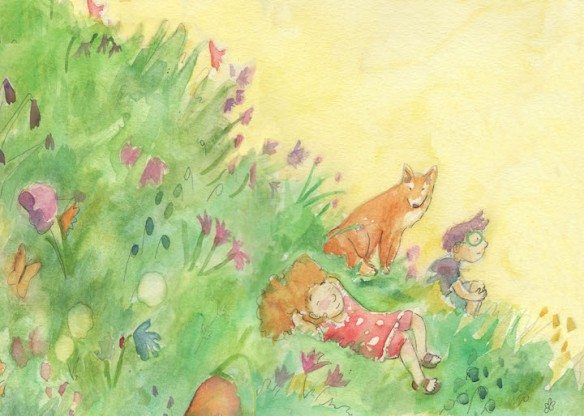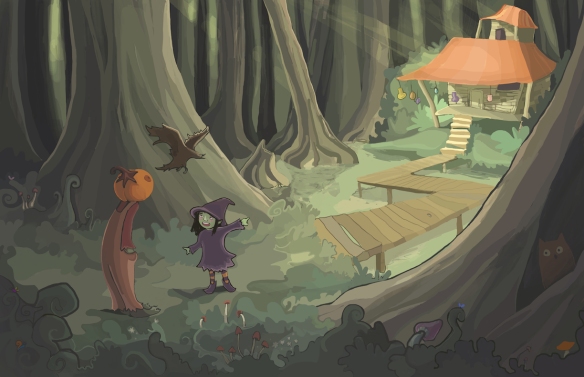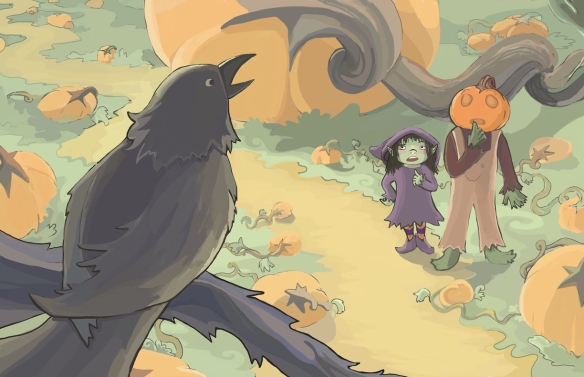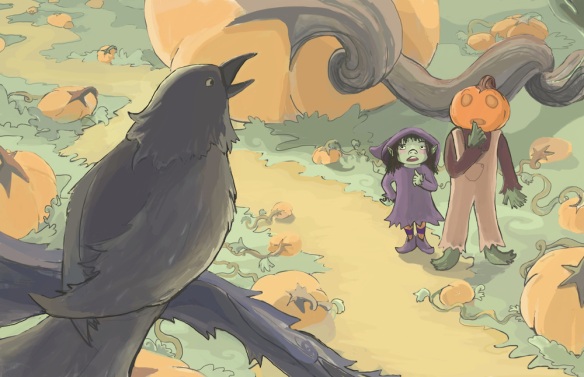Looking back at past projects I completely forgot how tedious my process can be sometimes, especially when I need to depict a light source just right, an emotion just right. I’ll never get anything just right. It’s more like “good enough for now” or “well the viewer will understand this image just enough I hope.”
I hope that in this particular image process that I’m about to share, the viewer will understand the story of Hello Robot in one image.
The story of Hello Robot is very incomplete. I have the images but I can’t seem to get the manuscript “just right” or even “good enough for now” because the reader wont understand the story just enough. Words just can’t describe the way I feel about Hello Robot so maybe light and emotion will.
I’ll start you off by introducing Hello Robot, or Bucket, here.

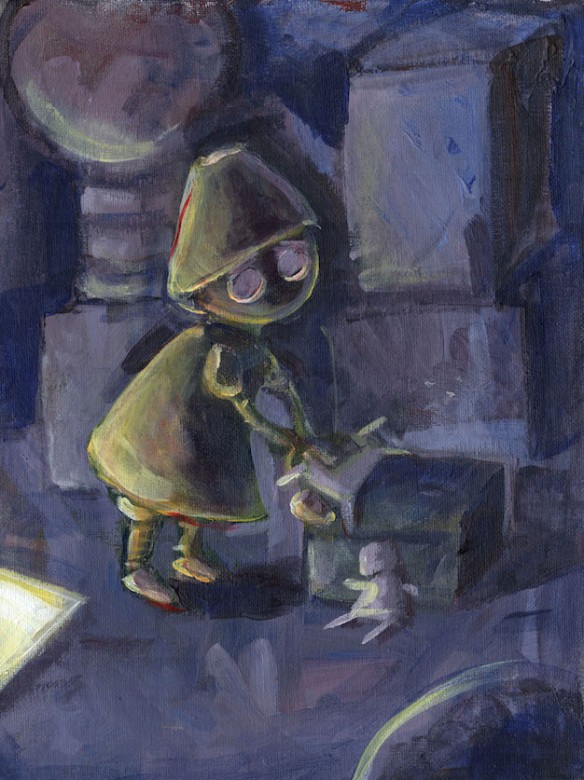
My process for a completed image always begins with character development. I need to know the character before I can accurately create an image of them. Getting to know the character is the longest part of the process, I mean it takes a while to get to know someone properly, right?
Now on to the image which I hope the viewer will understand that is the peak show of character for Bucket here. I first start with a thumbnail and then a detailed sketch like this:

Here I don’t have the lighting quite right but I have the shapes down. The lighting is very important for the entire story but especially this image. You might be able to see why in a bit.
I’ll go on to several color sketches. Depending on the final product, if I work traditionally then I’ll do digital sketches, if I work digitally I’ll do traditional color sketches like these.
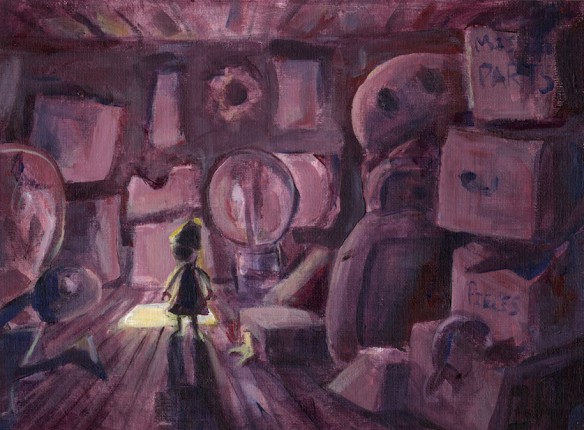

I’m starting to figure it out in the first color sketch and by the second sketch I know what I have to do in order for the emotion and the light to bring about proof of character and peak story arch.
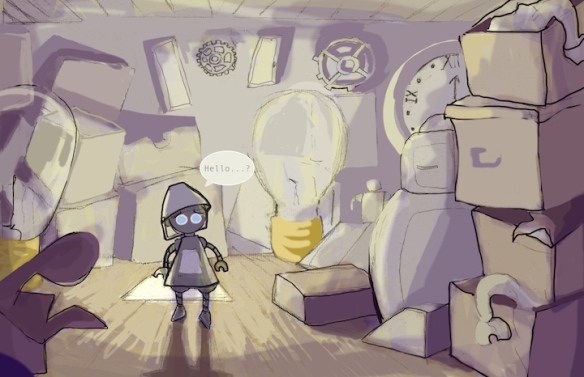
Here I’m finally on the digital. This image is about half way, but I can see the light at the end of the tunnel. I did not track all my process with the digital piece. I never do! Maybe I should do this is the future.
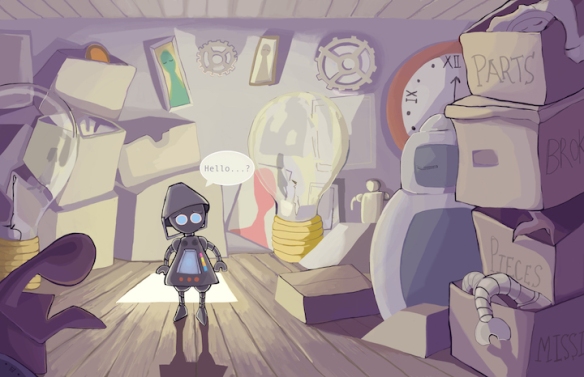
And there you have it, the final! Okay so I went on about light and emotion and stuff for a bit. Light to me can have a bunch of different meanings but the core meaning for me is spiritual. Here Bucket is leaving the light from below to explore the darkness above, an attic. He must do this to complete his exploration of the house to find someone to say “Hello” to that will say “Hello” back. He doesn’t find a hello in the darkness but he does find something else.
Sounds kind of spooky when I put it that way.
Do you understand his emotion? Do you get the “well the viewer will understand this image just enough I hope.”
Hello Robot is a whole story about exploring shadows and saving light sources. 